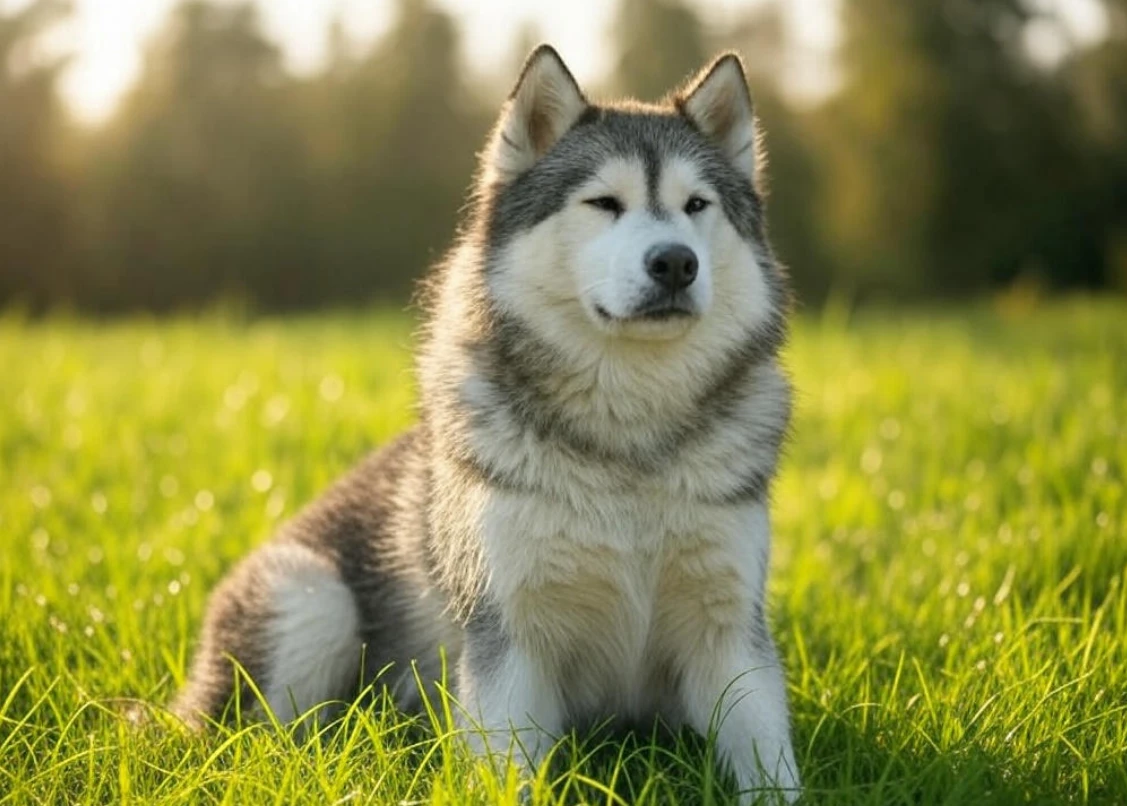
The Alaskan Malamute is a breed that embodies both strength and companionship. Known for its imposing size, endurance, and unwavering loyalty, this breed was originally developed for hauling heavy sleds over long distances in the Arctic. Despite its wolf-like appearance, the Malamute is friendly, affectionate, and deeply attached to its human family. However, this is not a breed for everyone—Malamutes are independent thinkers, requiring consistent training, firm leadership, and an owner who understands their working dog mentality.
Originating from the Mahlemut Inuit people of Alaska, the Malamute is one of the oldest domesticated breeds in North America, with genetic ties to Arctic wolves. These dogs were essential for survival in extreme conditions, pulling sleds, hunting game, and even providing warmth to their owners. Unlike Siberian Huskies, which were bred for speed, Malamutes were built for power, capable of pulling heavy loads over long distances. Their importance grew during the Klondike Gold Rush in the late 19th century, solidifying their status as one of the most valued working breeds. Recognized by the American Kennel Club (AKC) in 1935, the Malamute remains a symbol of Alaska’s rugged and untamed wilderness.
Physically, Malamutes are large, muscular, and built for endurance. Males typically stand around 25 inches tall at the shoulder and weigh 85 pounds, while females are slightly smaller at 23 inches and 75 pounds. Their broad head, almond-shaped brown eyes, and erect triangular ears give them a strikingly intelligent expression. Their thick, plumed tail curls over their back, and their powerful, well-padded paws are designed for traction on ice and snow. Unlike some Arctic breeds, Malamutes do not have blue eyes—only brown eyes are recognized by the AKC standard.
Their double coat is essential for surviving in cold climates. The outer coat is harsh and water-resistant, while the dense undercoat provides insulation. Coat colors range from solid white to a mix of black, gray, red, sable, silver, and agouti. Blue eyes, while visually appealing, are not permitted in breed standards.
Despite their imposing size, Malamutes are gentle, playful, and social dogs. They are naturally friendly, even towards strangers, which makes them poor guard dogs. However, they have a strong pack mentality, meaning they need a firm but fair leader. Without proper leadership, a Malamute will assume the dominant role in the household, which can lead to stubbornness or behavioral issues.
Training requires patience and consistency. Malamutes are highly intelligent but independent, meaning they respond best to positive reinforcement techniques rather than harsh corrections. Early socialization is key to ensuring they get along with other animals and unfamiliar people. While they are affectionate with children, their large size and playful energy mean interactions should always be supervised.
Malamutes are high-energy working dogs that require plenty of physical and mental stimulation. A lack of activity can lead to destructive behavior, such as digging, chewing, or excessive howling. Daily exercise is a must, with activities such as long walks, hikes, or pulling weight carts being ideal outlets for their energy. They also enjoy socializing with other dogs but may be territorial or dominant, particularly with same-sex dogs.
The Alaskan Malamute’s thick double coat requires consistent grooming, particularly during shedding seasons in spring and fall. Brushing at least twice a week will help manage loose fur, while daily brushing is necessary when they shed their undercoat. Baths should be given only a few times a year, as over-washing can strip their coat of natural oils.
While Malamutes can adapt to apartment living, they thrive best in homes with large fenced yards. They do not tolerate long periods of isolation and may develop destructive habits if left alone too often. A spacious enclosure with a well-insulated dog house is recommended for those keeping them outdoors, but they should still have plenty of daily interaction with their owners.
Malamutes also love cold weather and are happiest in cooler climates. In warm regions, they need plenty of shade, fresh water, and exercise limited to cooler times of the day to prevent overheating.
Malamutes have a strong appetite and require a balanced diet rich in high-quality proteins, healthy fats, and essential nutrients. Their diet should primarily include:
Because Malamutes tend to overeat, portion control is crucial to prevent obesity and joint strain. Processed, fatty, or sugary foods should be avoided, as they can cause digestive issues. Puppies should be fed three times a day, while adult Malamutes typically do best with two meals daily.
The Alaskan Malamute is a strong, intelligent, and deeply loyal breed, best suited for active families or individuals who appreciate its working-dog nature. While they require dedicated training and ample exercise, they reward their owners with unwavering companionship and a playful, affectionate spirit. If you’re looking for a devoted and adventurous canine companion, the Alaskan Malamute might be the perfect breed for you.